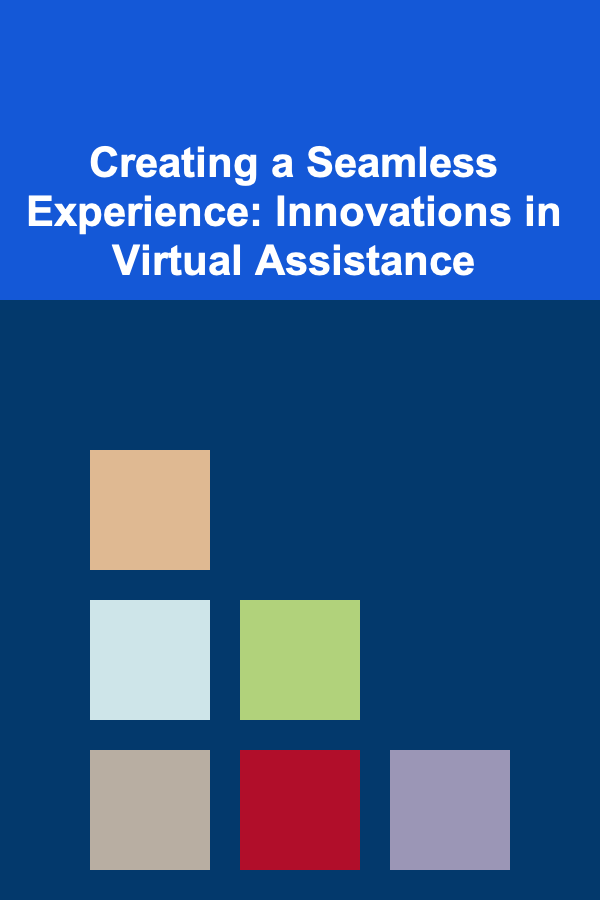
How to Develop a Mindful Relationship with Technology
ebook include PDF & Audio bundle (Micro Guide)
$12.99$10.99
Limited Time Offer! Order within the next:

In the modern world, technology permeates every aspect of our lives. From the moment we wake up to the time we go to bed, our interactions with smartphones, computers, and other digital devices are constant. While technology has undoubtedly made our lives easier and more connected, its pervasive presence also presents a unique set of challenges. One of the most pressing concerns is the impact of excessive screen time on mental health, focus, and overall well-being. The need to develop a mindful relationship with technology has never been more crucial.
In this article, we will explore what it means to have a mindful relationship with technology, why it is important, and practical steps you can take to foster this relationship. By becoming more conscious of how and when we engage with technology, we can ensure that it serves us rather than controls us.
Understanding Mindfulness and Technology
What is Mindfulness?
Mindfulness is a mental practice that involves focusing on the present moment with full awareness, without judgment. It encourages us to pay attention to our thoughts, feelings, and surroundings, as well as to become more aware of the physical and emotional sensations we experience in each moment. The goal of mindfulness is to increase self-awareness and cultivate a sense of inner peace, acceptance, and clarity.
Technology and the Need for Mindfulness
In the context of technology, mindfulness involves being intentional about how we use digital devices and how much time we spend on them. The problem arises when we mindlessly scroll through social media feeds, check our phones out of habit, or allow technology to take over our day-to-day lives. Instead of being fully present in our lives, we can become distracted, disconnected, and overwhelmed.
A mindful relationship with technology is about recognizing these patterns and taking steps to avoid becoming too dependent on or consumed by our devices. It involves finding a balance between enjoying the benefits of technology while also protecting our mental health and personal well-being.
The Impact of Technology on Our Lives
Positive Effects of Technology
There is no denying the positive impact of technology. In many ways, technology has revolutionized the way we work, communicate, learn, and live. Some of the key benefits of technology include:
- Increased Connectivity: Technology enables us to stay connected with family, friends, and colleagues, regardless of geographical location. Video calls, instant messaging, and social media platforms allow us to bridge the distance and maintain relationships.
- Access to Information: The internet has made information more accessible than ever before. With just a few clicks, we can learn about almost any topic, from health and fitness to history and science. Technology has democratized education, offering online courses, tutorials, and learning platforms.
- Improved Efficiency: Technological tools like automation, cloud storage, and productivity apps have made our work processes more efficient. Whether it's managing emails, scheduling meetings, or collaborating with others, technology has streamlined tasks and made us more productive.
- Entertainment and Creativity: Technology has also transformed entertainment, with platforms like streaming services, gaming consoles, and social media allowing people to access a variety of content. Additionally, digital tools have empowered creators to express themselves in new and innovative ways, from photography to music production.
The Dark Side of Technology
Despite these benefits, technology also has its drawbacks. The excessive use of digital devices can have a negative impact on our mental health, relationships, and physical well-being. Some of the common negative effects of technology include:
- Increased Stress and Anxiety: Constant notifications, emails, and social media updates can lead to information overload, making us feel stressed and anxious. The pressure to always be "on" and available can take a toll on our mental health.
- Reduced Attention Span: The constant switching between apps, tabs, and devices can make it difficult to focus on one task for an extended period of time. Studies have shown that the more we multitask, the less efficient we become, and our ability to concentrate diminishes over time.
- Social Isolation: While technology connects us with others online, it can also lead to feelings of isolation. Spending too much time on screens can reduce face-to-face interactions, making us feel disconnected from the people around us.
- Physical Health Issues: Prolonged use of technology, especially smartphones and computers, can lead to physical health issues such as eye strain, poor posture, and sleep disturbances. The blue light emitted by screens can interfere with our circadian rhythm, affecting our sleep quality.
- Addiction: Technology, especially social media and gaming, can become addictive. People often find themselves spending hours scrolling through feeds or playing games, leading to a lack of balance in their lives and neglecting other important areas such as work, exercise, and personal relationships.
Developing a Mindful Relationship with Technology
To develop a mindful relationship with technology, we need to take conscious steps to manage our usage and create boundaries. Here are some practical strategies to help you build a healthier, more intentional relationship with technology:
1. Set Clear Boundaries
One of the most effective ways to develop mindfulness around technology is by setting clear boundaries. These boundaries can be both time-based and situational.
- Time-Based Boundaries: Limit the amount of time you spend on screens each day. Use apps or built-in phone features to track your screen time and set limits on non-essential apps, such as social media or entertainment platforms. For instance, you might set a 30-minute limit for social media use each day to avoid mindless scrolling.
- Situational Boundaries: Create tech-free zones in your home. For example, make the dining table or bedroom a place for in-person conversations, eating, and relaxation---without the distraction of screens. Also, set rules for specific situations, such as no phone use during meetings or family gatherings, to ensure quality time with others.
2. Practice Digital Detoxes
A digital detox involves taking a break from technology for a specified period of time. This could range from a few hours to an entire weekend. During a digital detox, disconnect from your devices and focus on activities that don't involve screens, such as reading a book, going for a walk, or engaging in creative hobbies.
A digital detox gives your mind and body a chance to reset and recharge. It can also help you reconnect with the present moment and reduce the stress and overwhelm that often come with constant connectivity.
3. Mindful Social Media Use
Social media can be one of the most distracting and time-consuming aspects of technology. To use it more mindfully, consider the following strategies:
- Be Intentional: Before logging into social media, ask yourself what your purpose is. Are you checking to see updates from friends, looking for inspiration, or just scrolling mindlessly? Being intentional with your social media use can help prevent you from falling into the trap of endless scrolling.
- Limit Notifications: Disable non-essential notifications on your phone to reduce distractions. By limiting the constant barrage of alerts, you can take back control over your attention and avoid reacting impulsively to every ping.
- Unfollow Accounts That Don't Add Value: Evaluate the accounts you follow and unfollow those that contribute to negative emotions, comparison, or stress. Instead, follow accounts that promote positivity, inspiration, or personal growth.
4. Create Tech-Free Times
Designating specific times in the day as tech-free can help you balance your screen time with other activities. For example, you might choose to have "tech-free" meals, where you focus on the food and the people around you. Similarly, you can set aside time before bed to unwind without screens, allowing your brain to relax and prepare for sleep.
By setting aside designated times to be screen-free, you ensure that technology doesn't interfere with your ability to enjoy other aspects of life, such as self-care, relaxation, and quality time with loved ones.
5. Practice Focused Work
If you find yourself getting distracted while working, try implementing mindfulness techniques to help you stay focused:
- Single-Tasking: Avoid multitasking, as it can reduce your efficiency and attention span. Instead, focus on one task at a time. You can also break larger tasks into smaller, manageable steps to maintain momentum and avoid feeling overwhelmed.
- Pomodoro Technique: This technique involves working in short, focused intervals (usually 25 minutes), followed by a short break. During the break, you can check your phone or take a walk, allowing you to reset before continuing your work.
- Remove Distractions: Turn off unnecessary notifications, close irrelevant tabs, and create a clutter-free workspace to improve your focus. This can help you be more mindful of the task at hand and improve your productivity.
6. Cultivate Presence in the Real World
Finally, one of the best ways to develop a mindful relationship with technology is to cultivate presence in the real world. Focus on the here and now, rather than getting caught up in the digital distractions around you.
Engage fully with the people around you by maintaining eye contact, actively listening, and participating in conversations without distractions. Practice being present in nature, taking time to appreciate your surroundings and disconnecting from the digital noise.
Conclusion
Technology is an invaluable tool that has transformed our lives in countless ways. However, it's essential to develop a mindful relationship with it in order to prevent it from taking over our mental and emotional well-being. By setting boundaries, practicing digital detoxes, and becoming more intentional with our technology use, we can create a balanced relationship with our devices that enhances our lives rather than detracts from them.
Mindfulness is the key to ensuring that technology serves us, rather than controls us. When we approach technology mindfully, we can fully enjoy its benefits without becoming overwhelmed or disconnected from the present moment. Through awareness and intentionality, we can maintain a healthy relationship with technology and use it to enhance, not hinder, our lives.

Creating a Seamless Experience: Innovations in Virtual Assistance
Read More
How to Evaluate the Effectiveness of Your Soundproofing
Read More
How to Prevent Keyless Entry Break-ins in Your Home
Read More
Maximizing Your Commute: Tips for Effectively Utilizing Ride-Sharing Services
Read More
How to Find Exciting Surf Spots
Read More
How to Participate in Decentralized Autonomous Organizations (DAOs)
Read MoreOther Products

Creating a Seamless Experience: Innovations in Virtual Assistance
Read More
How to Evaluate the Effectiveness of Your Soundproofing
Read More
How to Prevent Keyless Entry Break-ins in Your Home
Read More
Maximizing Your Commute: Tips for Effectively Utilizing Ride-Sharing Services
Read More
How to Find Exciting Surf Spots
Read More